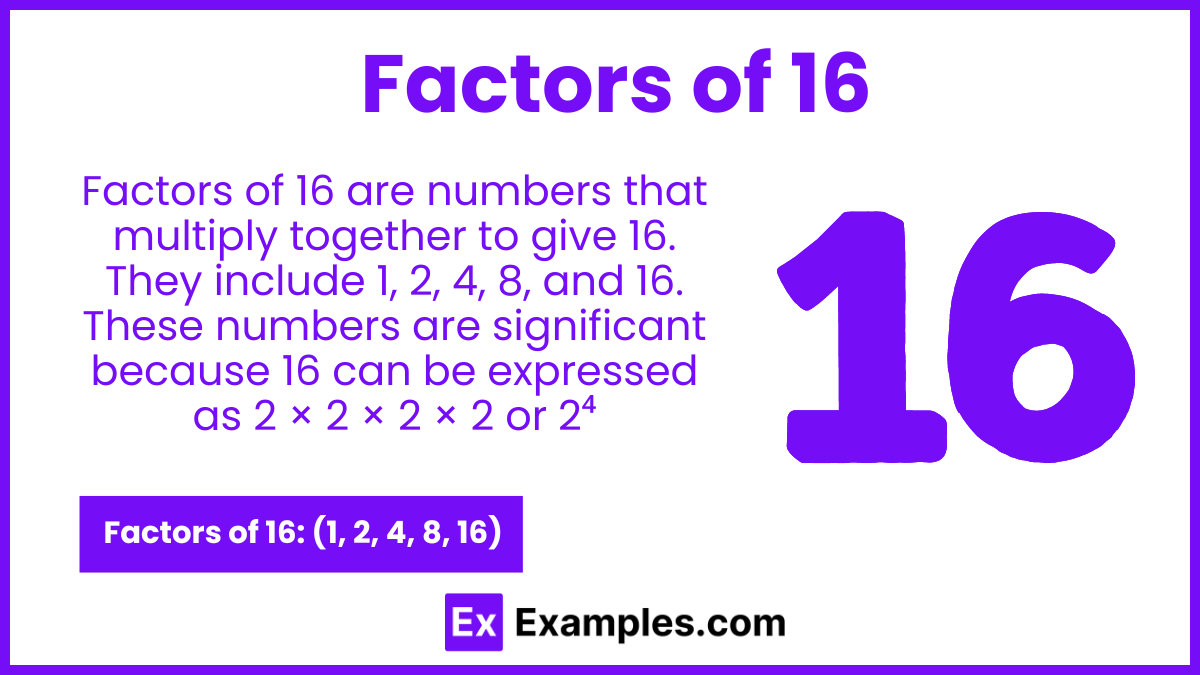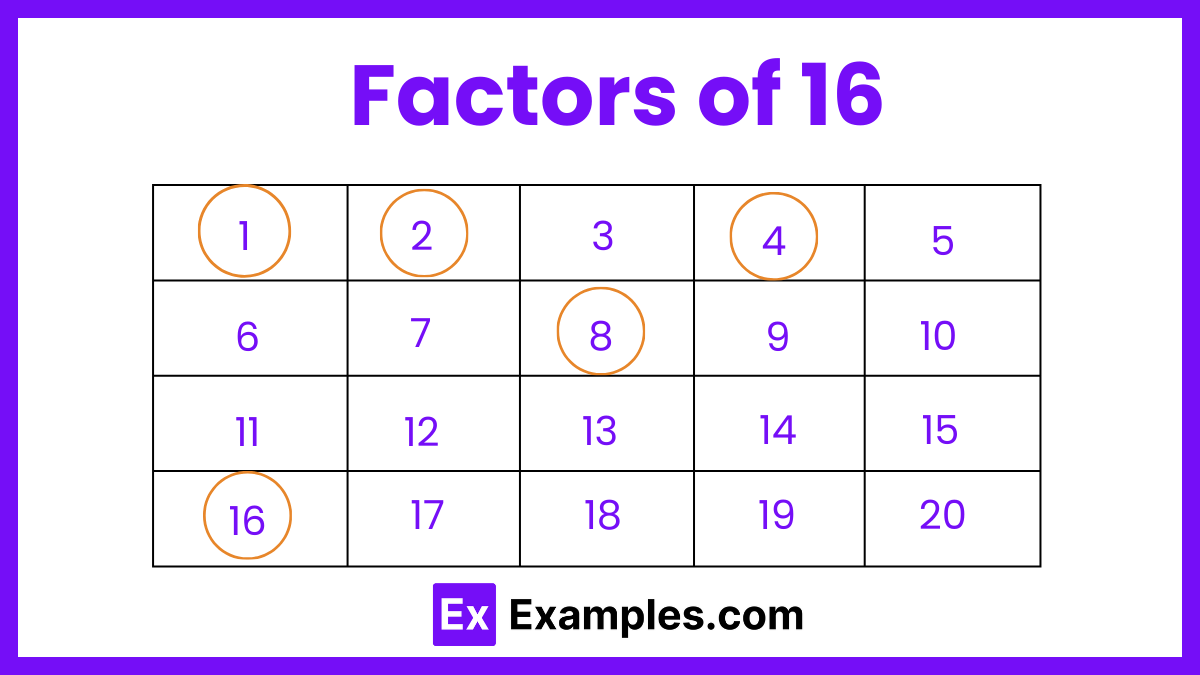Which of the following numbers is a factor of 16?
3
4
5
7

Factors of 16 are the numbers that divide 16 without leaving a remainder. Understanding these factors is essential in various mathematical applications, including simplifying fractions and solving algebraic problems. The factors of 16 include both prime and composite numbers, and they can be identified through simple division. In this article, we will explore all the factors of 16, their properties, and their significance in mathematics. By the end of this guide, you will have a clear understanding of how to find and use the factors of 16 effectively in different mathematical contexts.

The factors of 16 are the numbers that can be multiplied together to produce the product of 16. These factors include 1, 2, 4, 8, and 16. Each of these numbers divides 16 evenly without leaving a remainder. To understand this better, we can break it down: 1 x 16 = 16, 2 x 8 = 16, and 4 x 4 = 16. Factors are fundamental in various mathematical operations such as simplifying fractions, finding common denominators, and solving algebraic equations.
Factor pairs of 16 are the pairs of numbers that, when multiplied together, yield the product of 16. These pairs include:
These factor pairs demonstrate the various combinations of integers that can be multiplied to result in 16. Understanding these pairs is useful in mathematical contexts such as solving equations, simplifying expressions, and exploring number properties.
Calculating the prime factors of 16 involves breaking down the number into its prime components. Prime factors are the prime numbers that multiply together to equal the original number. Here’s how you can find the prime factors of 16 in a step-by-step process:
Begin with the smallest prime number, which is 2. Determine if 16 is divisible by 2.
Divide 16 by 2 to get 8. Since 8 is an even number, continue dividing by 2.
Divide 8 by 2 to get 4. Again, since 4 is even, divide by 2 once more.
Divide 4 by 2 to get 2. Finally, divide 2 by 2 to get 1.
The prime factors of 16 are the numbers you used to divide: 2, 2, 2, and 2. Therefore, the prime factorization of 16 is 2 × 2 × 2 × 2 or 24.
Find all the factors of 16.
List the factor pairs of 16.
Simplify the fraction 16/64.
Is 16 divisible by 4?
Find the prime factorization of 16.
Understanding the factors of 16 can be useful in various mathematical contexts. Here are some tips to help you work with the factors of 16 effectively:
Yes, 16 is a composite number. Composite numbers have more than two factors. The factors of 16 are 1, 2, 4, 8, and 16.
The prime factors of 16 are 2. When 16 is expressed as a product of prime numbers, it is 2 × 2 × 2 × 2 or 24.
Yes, 16 can be a factor of another number if that number is divisible by 16 without leaving a remainder. For example, 32 and 48 are divisible by 16.
Typically, factors are considered in their positive form, but they can also be negative. The negative factors of 16 are -1, -2, -4, -8, and -16. So, the factors of 16 can be both positive and negative: 1, 2, 4, 8, 16, -1, -2, -4, -8, and -16.
The sum of the factors of 16 can be found by adding all its factors: 1 + 2 + 4 + 8 + 16 = 31.
No, factors and multiples are different concepts. Factors are numbers that divide 16 without leaving a remainder. Multiples of 16 are numbers that can be expressed as 16 times an integer (e.g., 16, 32, 48).
The common factors of 12 and 16 are the numbers that can divide both 12 and 16 without leaving a remainder. These common factors are:1, 2, 4
Text prompt
Add Tone
10 Examples of Public speaking
20 Examples of Gas lighting
Which of the following numbers is a factor of 16?
3
4
5
7
What is the smallest factor of 16?
1
2
4
8
How many factors does 16 have?
4
5
6
8
Which pair of numbers multiplied together gives 16?
2 and 7
4 and 5
2 and 8
3 and 6
What is the sum of all the factors of 16?
20
24
32
38
Which of the following is not a factor of 16?
1
3
4
8
What is the product of the factors of 16?
64
256
1024
4096
Find the largest factor of 16 that is less than 10.
6
8
9
10
What is the factor of 16 that is both even and less than 10?
1
2
4
8
Which of the following numbers is divisible by all the factors of 16?
16
20
24
32
Before you leave, take our quick quiz to enhance your learning!

